Abstract
We studied the effects of i.v. 2 mg/kg morphine sulfate (MS) on coronary blood flow and resistance, left ventricular (LV) diameter and pressure (P), rate of change of pressure (dP/dt), and dP/dt/P in conscious dogs. An initial transient reduction in coronary vascular resistance, associated with increases in heart rate, dP/dt, dP/dt/P, and reductions in LV end-diastolic and end-systolic size were observed. This was followed by a prolonged increase in mean coronary vascular resistance, lasting from 5 to 30 min, while heart rate, arterial pressure, and LV end-diastolic diameter returned to control levels and dP/dt/P remained slightly but significantly above control. At 10 min, late diastolic coronary flow had fallen from 44 plus or minus 3 ml/min to a minimum level of 25 plus or minus 3 ml/min, while late diastolic coronary resistance had risen from 1.68 plus or minus 0.10 to 3.04 plus or minus 0.28 mm Hg/ml/min. Morphine also induced substantial coronary vasoconstriction when heart rate was held constant. Neither the MS-induced coronary vasoconstriction nor the positive inotropic response was abolished by bilateral adrenalectomy. The positive inotropic response of MS was reversed after beta blockade, but not the coronary vasoconstriction. Alpha receptor blockade abolished the late coronary vasoconstriction effects of morphine, and only dilatation occurred. In anesthetized dogs MS failed to produce late coronary vasoconstriction. Coronary after a respiratory-depressant dose of morphine, 10 mg/kg i.v. Smaller doses of MS, 0.25 mg/kg every 15 min, produced significant coronary vasoconstriction after a total dose of 0.75 mg/kg in the conscious dogs. The effects of morphine may differ in the normal dog and man and may vary depending upon the presence or absence of coronary artery disease. However, in the normal conscious dog, MS elicits a mild beta adrenergic increase in contractility and an important coronary vasoconstrictor effect, which is mediated through alpha adrenergic receptors.
Full text
PDF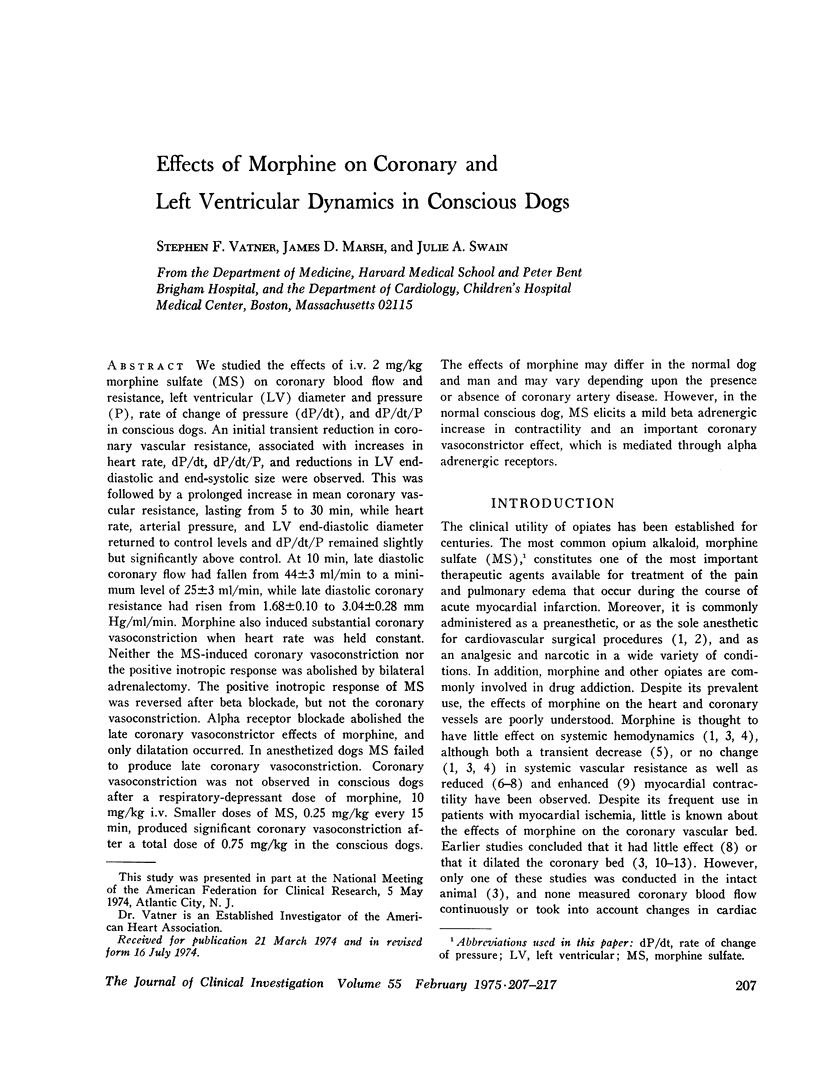
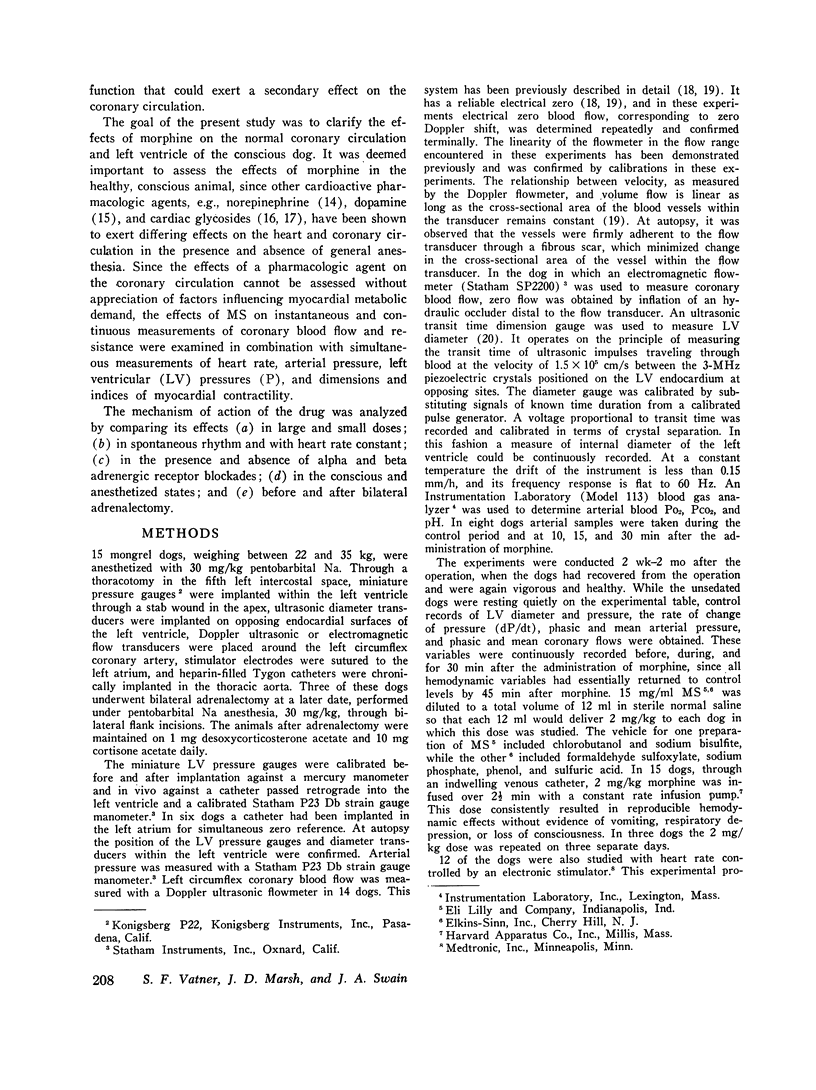

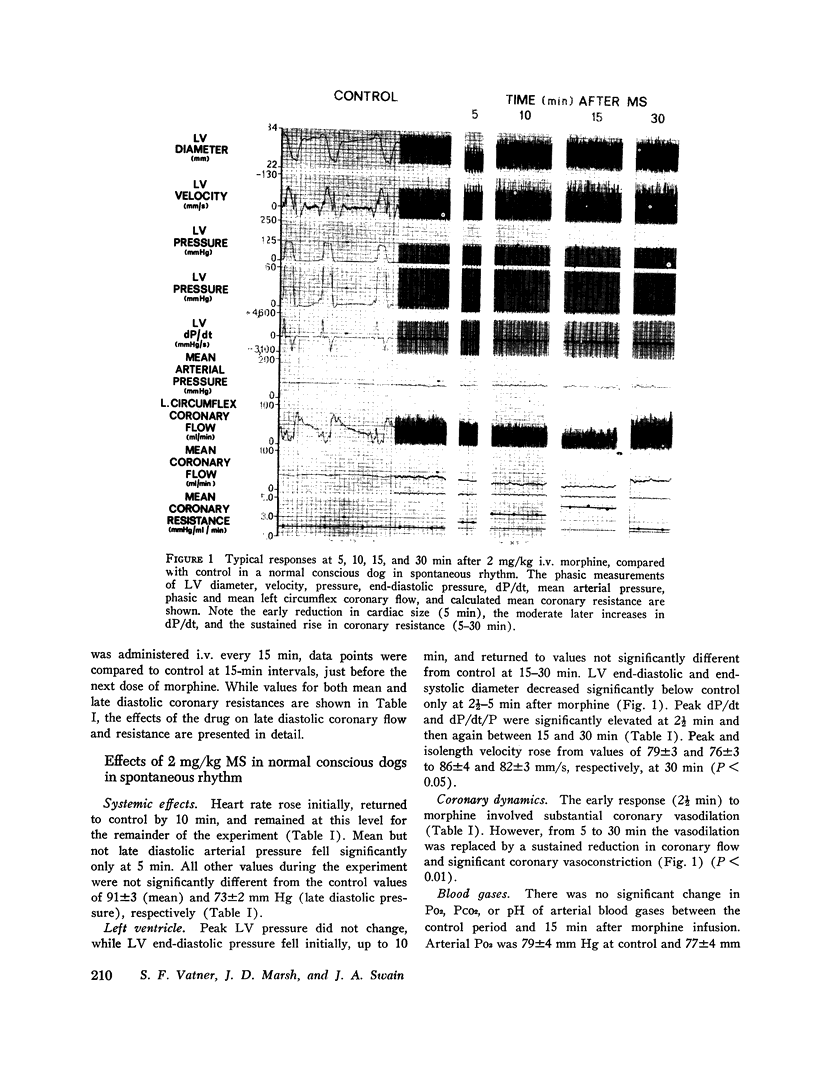
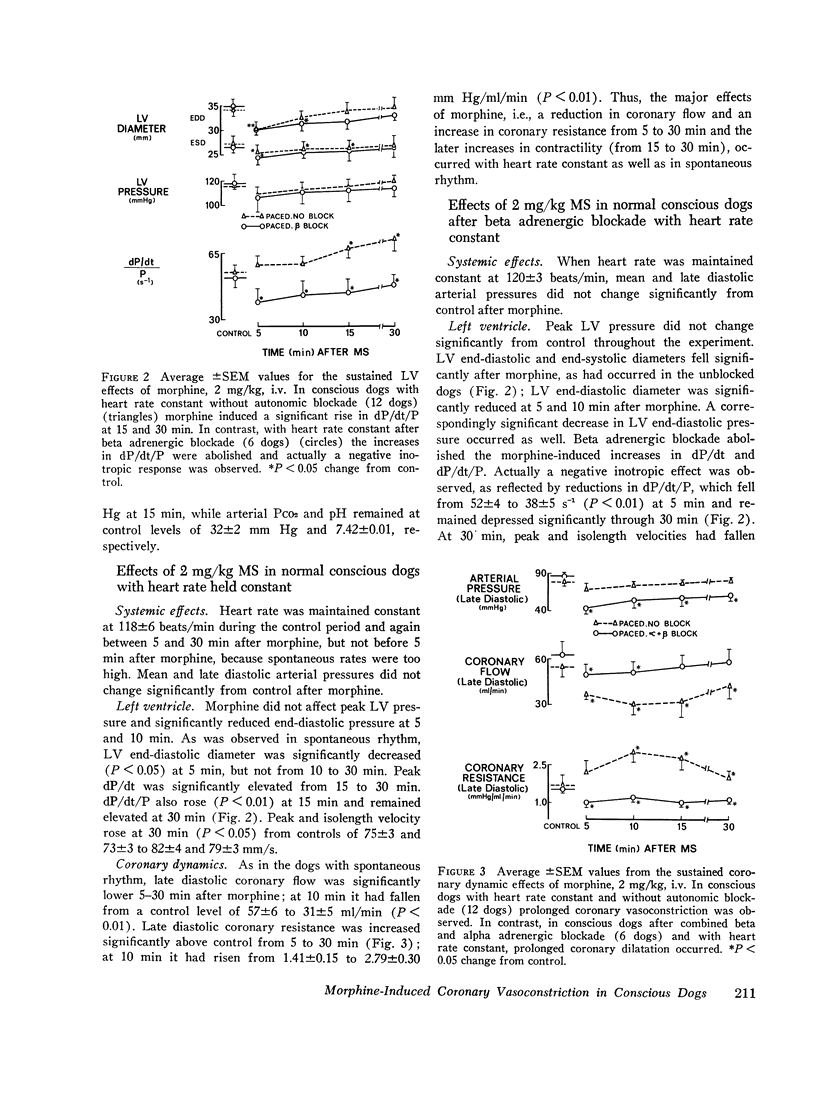
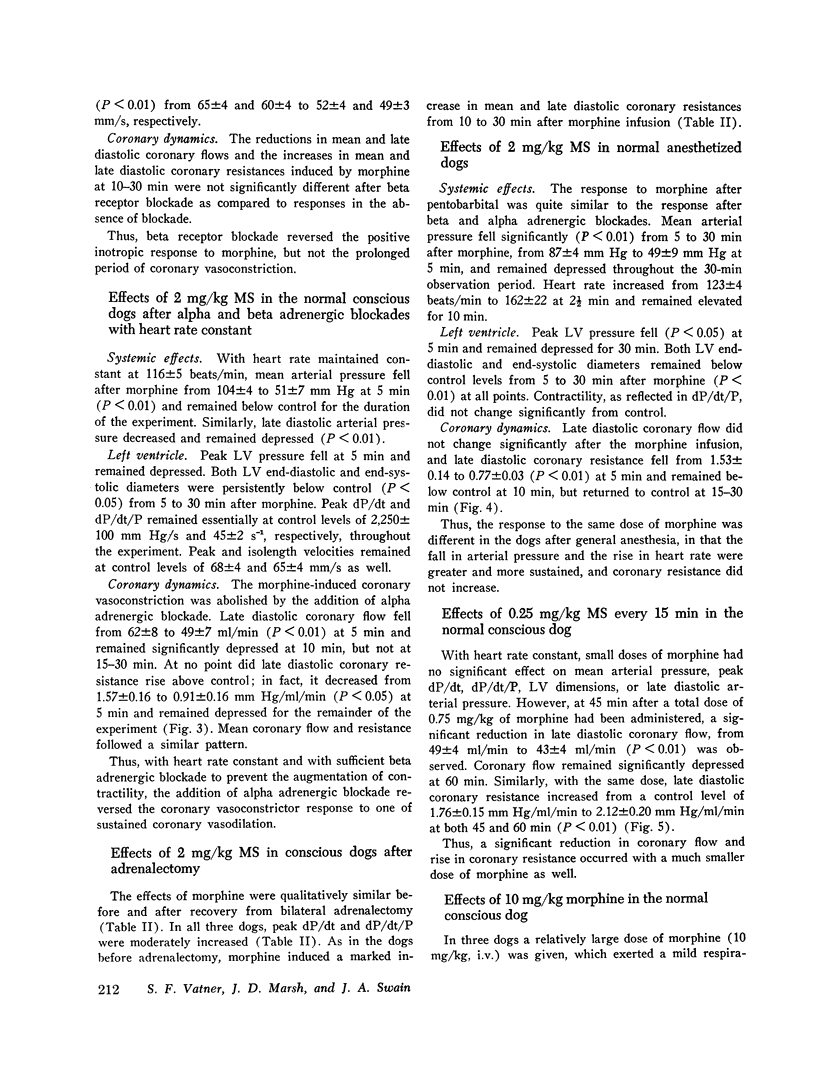
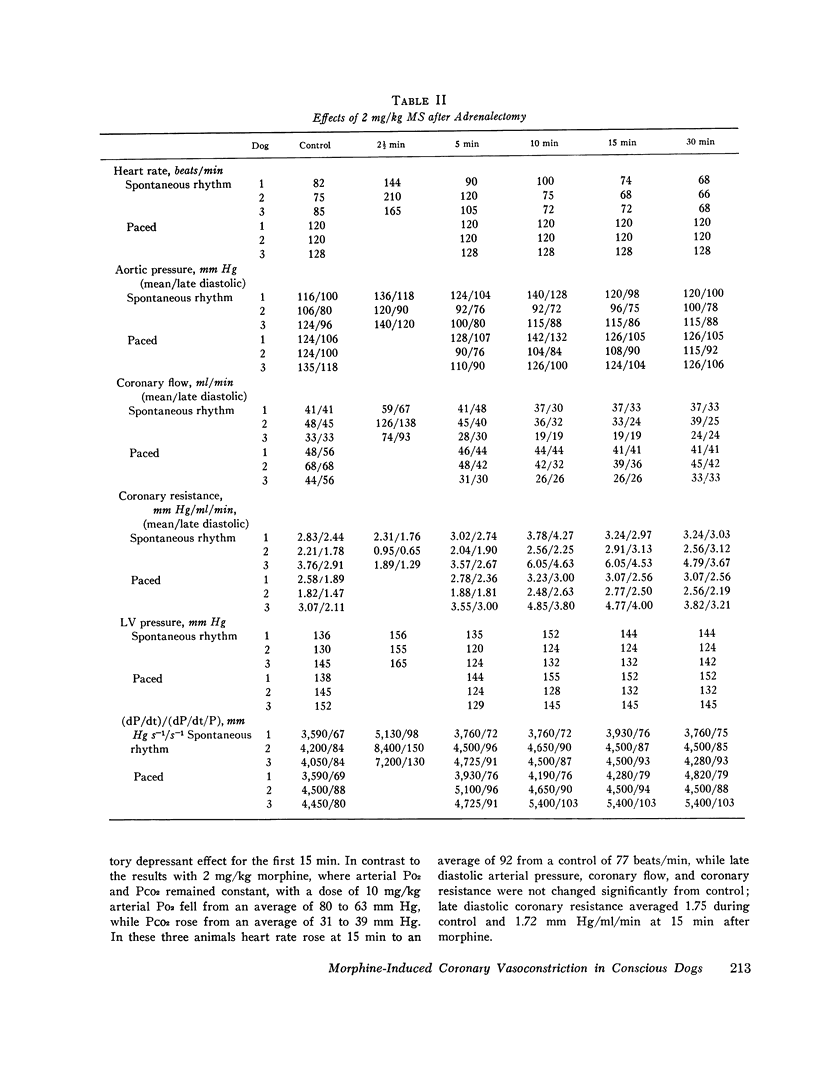
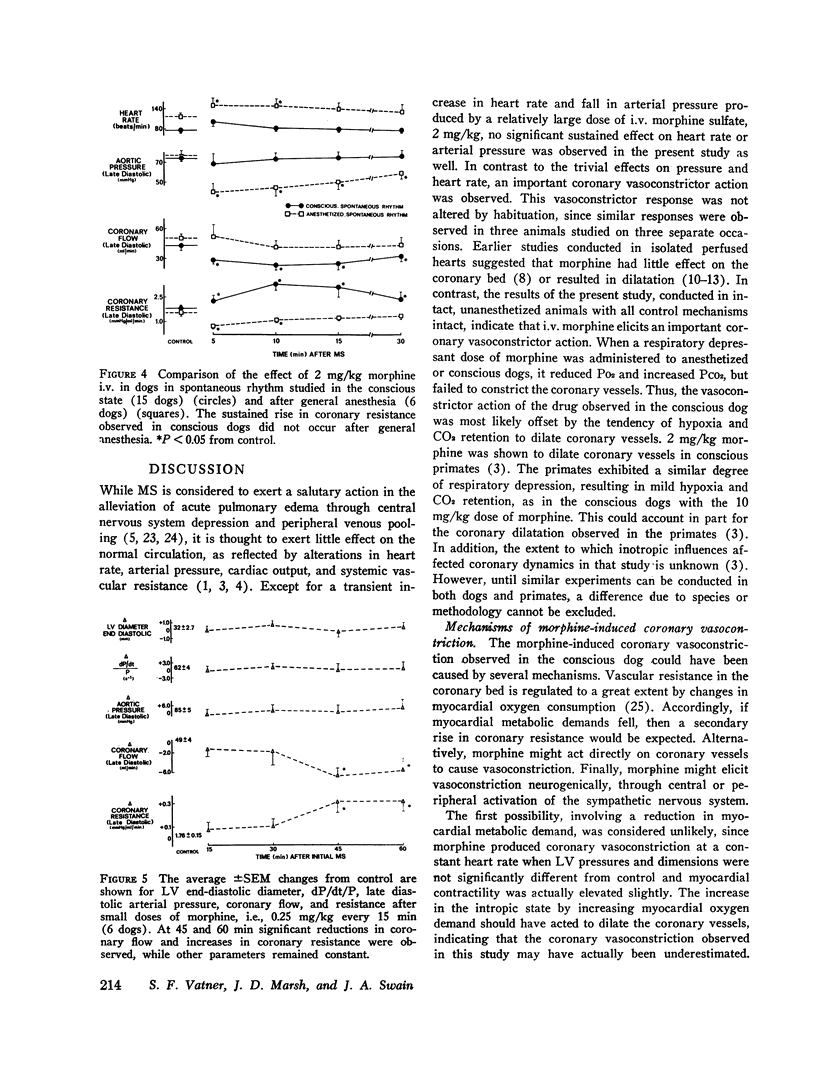
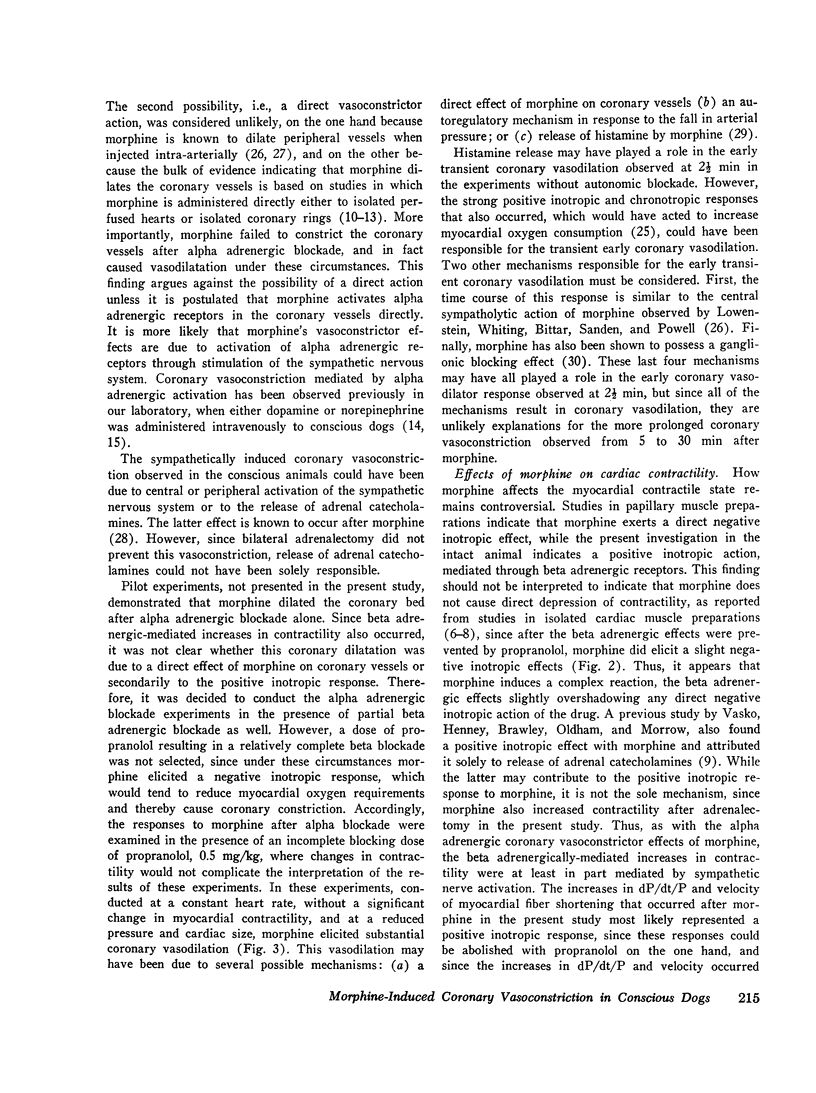
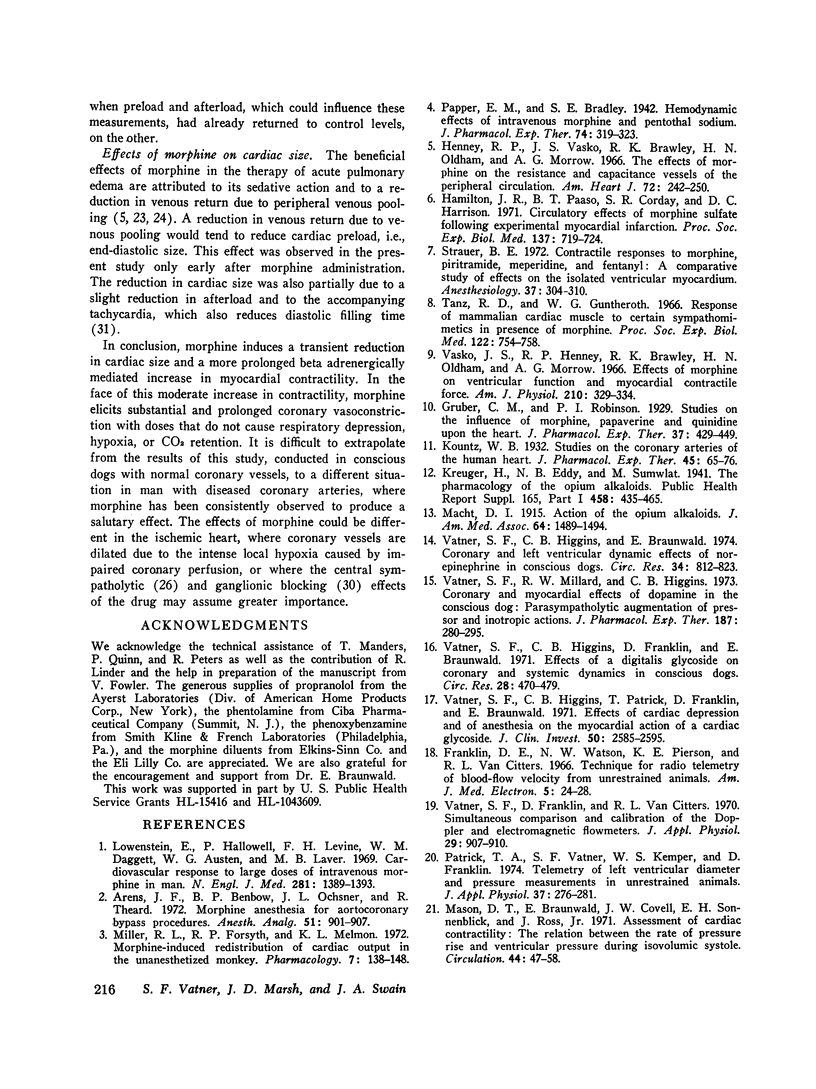
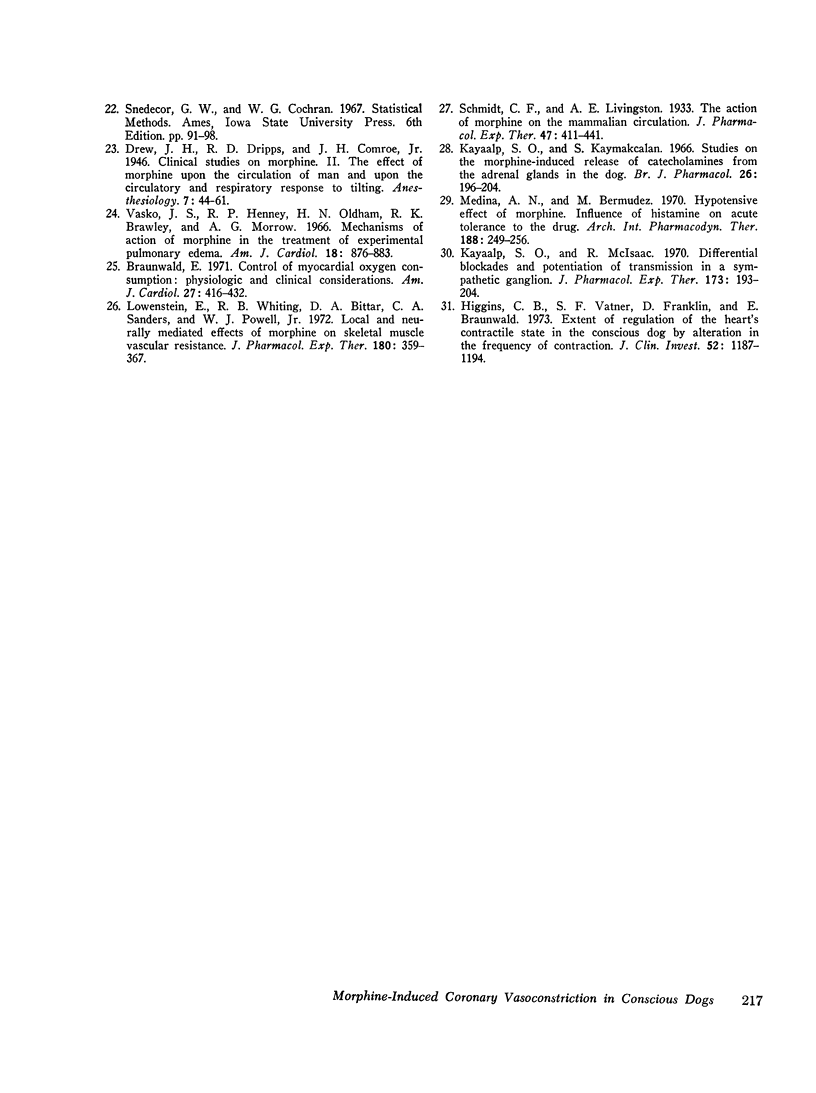
Images in this article
Selected References
These references are in PubMed. This may not be the complete list of references from this article.
- Arens J. F., Benbow B. P., Ochsner J. L., Theard R. Morphine anesthesia for aortocoronary bypass procedures. Anesth Analg. 1972 Nov-Dec;51(6):901–909. [PubMed] [Google Scholar]
- Braunwald E. Control of myocardial oxygen consumption: physiologic and clinical considerations. Am J Cardiol. 1971 Apr;27(4):416–432. doi: 10.1016/0002-9149(71)90439-5. [DOI] [PubMed] [Google Scholar]
- Franklin D. E., Watson N. W., Pierson K. E., Van Citters R. L. Technique for radio telemetry of blood-flow velocity from unrestrained animals. Am J Med Electron. 1966;5(1):24–28. [PubMed] [Google Scholar]
- Henney R. P., Vasko J. S., Brawley R. K., Oldham H. N., Morrow A. G. The effects of morphine on the resistance and capacitance vessels of the peripheral circulation. Am Heart J. 1966 Aug;72(2):242–250. doi: 10.1016/0002-8703(66)90448-0. [DOI] [PubMed] [Google Scholar]
- Higgins C. B., Vatner S. F., Franklin D., Braunwald E. Extent of regulation of the heart's contractile state in the conscious dog by alteration in the frequency of contraction. J Clin Invest. 1973 May;52(5):1187–1194. doi: 10.1172/JCI107285. [DOI] [PMC free article] [PubMed] [Google Scholar]
- Kayaalp S. O., McIsaac R. J. Differential blockage and potentiation of transmission in a sympathetic ganglion. J Pharmacol Exp Ther. 1970 May;173(1):193–204. [PubMed] [Google Scholar]
- Lowenstein E., Hallowell P., Levine F. H., Daggett W. M., Austen W. G., Laver M. B. Cardiovascular response to large doses of intravenous morphine in man. N Engl J Med. 1969 Dec 18;281(25):1389–1393. doi: 10.1056/NEJM196912182812503. [DOI] [PubMed] [Google Scholar]
- Lowenstein E., Whiting R. B., Bittar D. A., Sanders C. A., Powell W. J., Jr Local and neurally mediated effects of morphine on skeletal muscle vascular resistance. J Pharmacol Exp Ther. 1972 Feb;180(2):359–367. [PubMed] [Google Scholar]
- Mason D. T., Braunwald E., Covell J. W., Sonnenblick E. H., Ross J., Jr Assessment of cardiac contractility. The relation between the rate of pressure rise and ventricular pressure during isovolumic systole. Circulation. 1971 Jul;44(1):47–58. doi: 10.1161/01.cir.44.1.47. [DOI] [PubMed] [Google Scholar]
- Medina A. N., Bermudez M. Hypotensive effect of morphine. Influence of histamine on acute tolerance to the drug. Arch Int Pharmacodyn Ther. 1970 Dec;188(2):249–256. [PubMed] [Google Scholar]
- Miller R. L., Forsyth R. P., Melmon K. L. Morphine-induced redistribution of cardiac output in the unanesthetized monkey. Pharmacology. 1972;7(3):138–148. doi: 10.1159/000136283. [DOI] [PubMed] [Google Scholar]
- Patrick T. A., Vatner S. F., Kemper W. S., Franklin D. Telemetry of left ventricular diameter and pressure measurements from unrestrained animals. J Appl Physiol. 1974 Aug;37(2):276–281. doi: 10.1152/jappl.1974.37.2.276. [DOI] [PubMed] [Google Scholar]
- Strauer B. E. Contractile responses to morphine, piritramide, meperidine, and fentanyl: a comparative study of effects on the isolated ventricular myocardium. Anesthesiology. 1972 Sep;37(3):304–310. doi: 10.1097/00000542-197209000-00006. [DOI] [PubMed] [Google Scholar]
- Tanz R. D., Guntheroth W. G. Response of mammalian cardiac muscle to certain sympathomimetics in presence of morphine. Proc Soc Exp Biol Med. 1966 Jul;122(3):754–758. doi: 10.3181/00379727-122-31244. [DOI] [PubMed] [Google Scholar]
- Vasko J. S., Henney R. P., Brawley R. K., Oldham H. N., Morrow A. G. Effects of morphine on ventricular function and myocardial contractile force. Am J Physiol. 1966 Feb;210(2):329–334. doi: 10.1152/ajplegacy.1966.210.2.329. [DOI] [PubMed] [Google Scholar]
- Vasko J. S., Henney R. P., Oldham H. N., Brawley R. K., Morrow A. G. Mechanisms of action of morphine in the treatment of experimental pulmonary edema. Am J Cardiol. 1966 Dec;18(6):876–883. doi: 10.1016/0002-9149(66)90433-4. [DOI] [PubMed] [Google Scholar]
- Vatner S. F., Franklin D., VanCitters R. L. Simultaneous comparison and calibration of the Doppler and electromagnetic flowmeters. J Appl Physiol. 1970 Dec;29(6):907–910. doi: 10.1152/jappl.1970.29.6.907. [DOI] [PubMed] [Google Scholar]
- Vatner S. F., Higgins C. B., Braunwald E. Effects of norepinephrine on coronary circulation and left ventricular dynamics in the conscious dog. Circ Res. 1974 Jun;34(6):812–823. doi: 10.1161/01.res.34.6.812. [DOI] [PubMed] [Google Scholar]
- Vatner S. F., Higgins C. B., Franklin D., Braunwald E. Effects of a digitalis glycoside on coronary and systemic dynamics in conscious dogs. Circ Res. 1971 Apr;28(4):470–479. doi: 10.1161/01.res.28.4.470. [DOI] [PubMed] [Google Scholar]
- Vatner S. F., Higgins C. B., Patrick T., Franklin D., Braunwald E. Effects of cardiac depression and of anesthesia on the myocardial action of a cardiac glycoside. J Clin Invest. 1971 Dec;50(12):2585–2595. doi: 10.1172/JCI106759. [DOI] [PMC free article] [PubMed] [Google Scholar]
- Vatner S. F., Millard R. W., Higgins C. B. Coronary and myocardial effects of dopamine in the conscious dog: parasympatholytic augmentation of pressor and inotropic actions. J Pharmacol Exp Ther. 1973 Nov;187(2):280–295. [PubMed] [Google Scholar]



